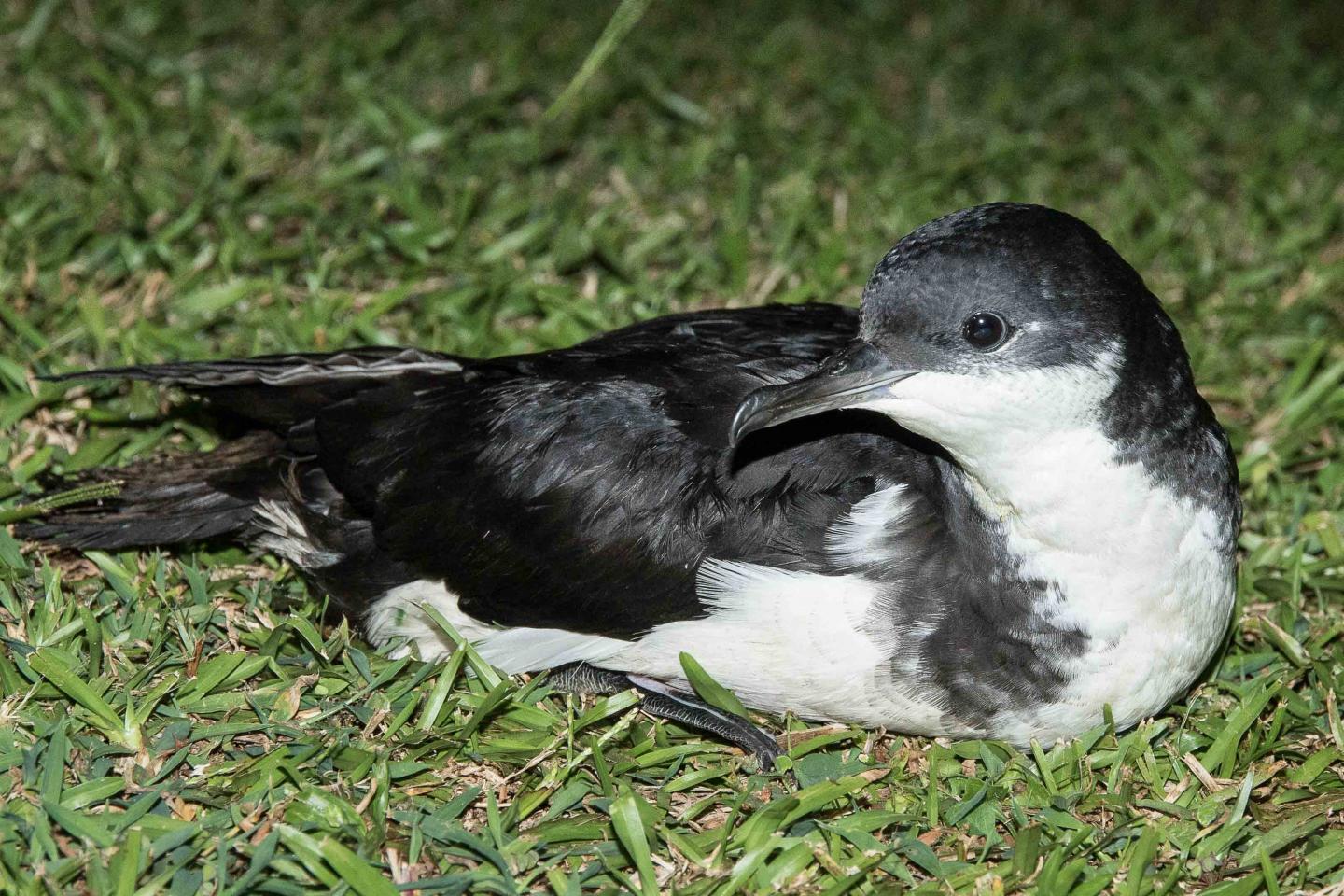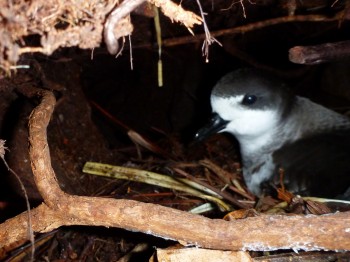
Newell’s Shearwater, photograph by Lindsay Young
André Raine (Archipelago Research & Conservation, Hanapēpē, Kauai, Hawaii, USA) and colleagues have published in the journal Pacific Science on breeding adult Newell’s Shearwaters Puffinus newelli (Critically Endangered) and Hawaiian Petrels Pterodroma sandwichensis (Endangered) being grounded by lights on the Hawaiian island of Kauai.
The paper’s abstract follows:
“Light attraction is a well-documented phenomenon affecting seabirds worldwide, with most reported incidents involving juvenile birds grounded around urban areas or brightly lit structures at sea immediately after fledging. However, there is little in the literature regarding the impact of light attraction on breeding adult seabirds on land. This paper describes a fallout event of adults of two endangered seabird species due to lights at a single facility on the island of Kaua‘i, Hawaii, and the effectiveness of subsequent minimization actions once a new lighting regime was adopted. From 1–16 September 2015, 131 adult endangered seabirds including 123 ‘a‘o (Newell’s Shearwaters Puffinus newelli) and six ‘ua‘u (Hawaiian Petrels Pterodroma sandwichensis) were grounded by lights at the Kōke‘e Air Force Station. Most birds had brood patches indicating they were breeders. In response, the facility altered its lighting protocol with a blackout period in effect for the remainder of 2015, and significantly reduced lighting from 2016 onwards. Intensive seabird monitoring was undertaken annually from 2016 onwards. Apart from two Newell’s Shearwater adults grounded in 2016 (before the lights were turned out at the start of the seabird season) and one each in 2020 and 2023, no additional grounded birds were found. This fallout event demonstrates that light attraction can be a significant hazard for adult seabirds if bright lights are present near breeding colonies. We provide recommendations for best practice light minimization actions for similar scenarios worldwide where discrete facilities or urban infrastructure are adjacent to breeding colonies of nocturnal Procellariid seabirds.”

Hawaiian Petrel in its burrow, photograph by André Raine
Reference:
Raine, A.F., Driskill, S., Rothe, J., Rossiter, S., Gregg, J., Anderson, T. & Travers, M.S. 2024. The impact of light attraction on adult seabirds and the effectiveness of minimization actions. Pacific Science 78: 85-102.
15 October 2024

 English
English  Français
Français  Español
Español